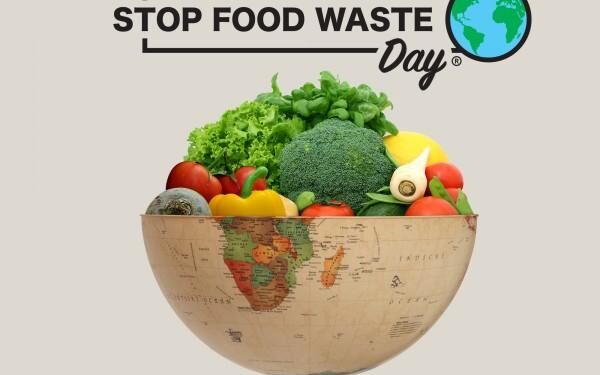In an era where sustainability is more critical than ever, a groundbreaking discovery offers a promising solution to two pressing challenges: food waste and renewable energy. Researchers have identified a novel bacterium capable of transforming discarded food into usable energy, potentially revolutionizing waste management and energy production. This remarkable microorganism not only paves the way for more efficient and eco-friendly technologies but also highlights the untapped potential hidden within the natural world. As scientists delve deeper into its capabilities, this tiny organism may soon play a big role in powering our future.
Researchers Unveil Novel Bacterium Revolutionizing Food Waste Energy Conversion
Scientists have isolated a groundbreaking bacterium capable of accelerating the conversion of organic waste into usable bioenergy with unprecedented efficiency. This microorganism thrives on a broad spectrum of food waste materials, breaking down complex compounds and releasing clean energy through a natural fermentation process. Unlike traditional methods requiring costly and time-consuming preprocessing, this bacterium operates optimally at ambient temperatures, making it a cost-effective and environmentally friendly solution for sustainable energy production.
Key features of this newly discovered bacterium include:
- High tolerance to diverse food waste types including dairy, grains, and vegetable scraps
- Rapid metabolism leading to faster energy output compared to existing strains
- Minimal residue generation, reducing landfill reliance and harmful emissions
| Parameter | Value | Comparison (Conventional) |
|---|---|---|
| Waste Breakdown Rate | 1.8 kg/day | 1.0 kg/day |
| Energy Yield | 550 kJ/g | 320 kJ/g |
| Operating Temp. Range | 20-30 °C | 35-45 °C |
Mechanisms Behind the Bacterium’s Efficient Breakdown of Organic Matter
The bacterium employs a sophisticated combination of enzymatic pathways to degrade complex organic compounds with remarkable speed and efficiency. Its arsenal includes lignocellulolytic enzymes that target cellulose, hemicellulose, and lignin – the primary building blocks of plant-based food waste. These enzymes act synergistically to break down tough fibers into simpler sugars, which the microbe then metabolizes into bioenergy precursors. Additionally, specialized transport proteins facilitate rapid uptake of these nutrients, optimizing the energy yield within minimal timeframes.
At the molecular level, this bacterium harnesses an adaptive regulatory network that senses the availability of different substrates and adjusts gene expression accordingly. This dynamic system allows it to prioritize the breakdown of the most energy-rich components first. Below is a concise overview of the key enzymatic functions involved:
| Enzyme Type | Primary Function | Energy Yield |
|---|---|---|
| Cellulase | Degrades cellulose into glucose | High |
| Laccase | Breaks down lignin polymers | Moderate |
| Hemicellulase | Converts hemicellulose into xylose and other sugars | Moderate |
Future Applications and Best Practices for Harnessing Microbial Energy Production
Unlocking the full potential of microbial energy production hinges on strategic implementation and innovation. This groundbreaking bacterium offers promising avenues in diverse sectors like renewable energy, waste management, and sustainable agriculture. Key best practices emphasize optimizing environmental conditions such as pH, temperature, and nutrient availability to maximize bacterial efficiency. Additionally, integrating this technology with existing anaerobic digesters could revolutionize energy yields from organic waste streams, making it possible to convert large-scale food waste into valuable bioenergy without added chemical inputs.
Looking ahead, scaling this microbial process requires focus on continuous monitoring and adaptive control systems to maintain peak performance. Collaborations between microbiologists, engineers, and policy makers will play a pivotal role in developing standardized protocols and infrastructure. To facilitate transition from lab to market, consider the following best practices:
- Modular bioreactor design: Enables flexible capacity and ease of maintenance
- Real-time metabolite analysis: Ensures consistent energy output
- Waste feedstock pre-treatment: Enhances bacterial uptake and conversion rates
- Data-driven process optimization: Utilizes AI-driven adjustments for maximal efficiency
| Application Area | Potential Benefits | Implementation Challenge | ||||||||
|---|---|---|---|---|---|---|---|---|---|---|
| Urban Waste Management | Reduced landfill use, energy recovery | Logistics of waste collection | ||||||||
| Remote Energy Supply | Off-grid bioelectricity | System robustness in harsh environments Certainly! Here’s the completed table and a polished continuation of the text for your section on future applications:
“`html Unlocking the full potential of microbial energy production hinges on strategic implementation and innovation. This groundbreaking bacterium offers promising avenues in diverse sectors like renewable energy, waste management, and sustainable agriculture. Key best practices emphasize optimizing environmental conditions such as pH, temperature, and nutrient availability to maximize bacterial efficiency. Additionally, integrating this technology with existing anaerobic digesters could revolutionize energy yields from organic waste streams, making it possible to convert large-scale food waste into valuable bioenergy without added chemical inputs. Looking ahead, scaling this microbial process requires focus on continuous monitoring and adaptive control systems to maintain peak performance. Collaborations between microbiologists, engineers, and policy makers will play a pivotal role in developing standardized protocols and infrastructure. To facilitate transition from lab to market, consider the following best practices:
|
















![[News] Japan Develops 10nm Nanoimprint Technology, with Potential to Tackle EUV Bottleneck – TrendForce](https://earth-news.info/wp-content/uploads/2025/12/329851-news-japan-develops-10nm-nanoimprint-technology-with-potential-to-tackle-euv-bottleneck-trendforce-360x180.jpg)














